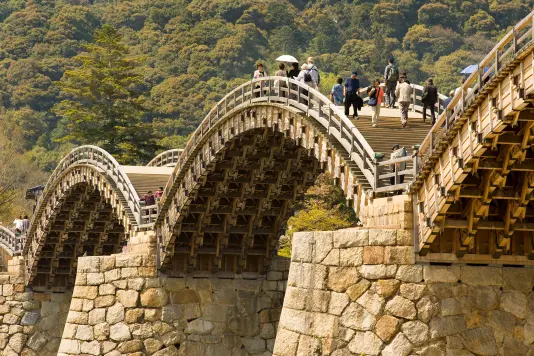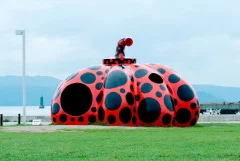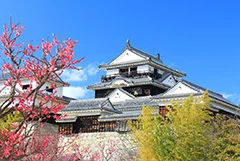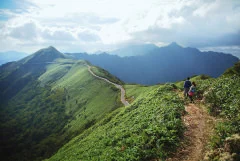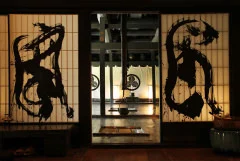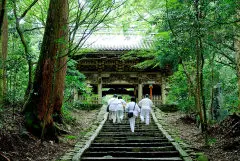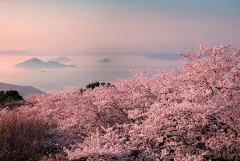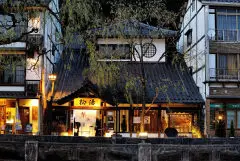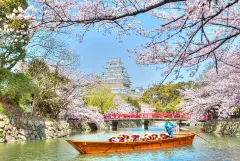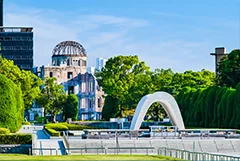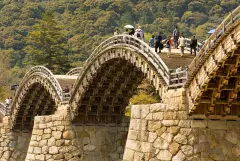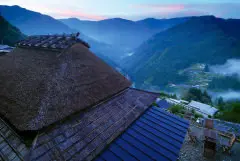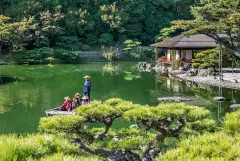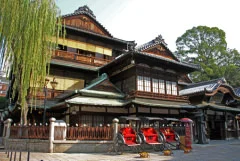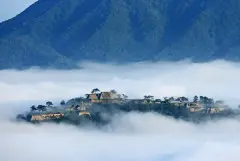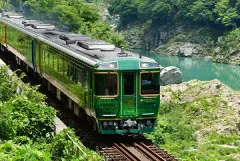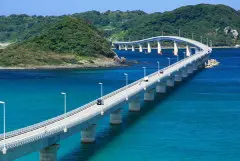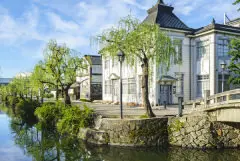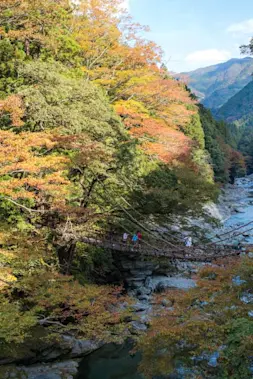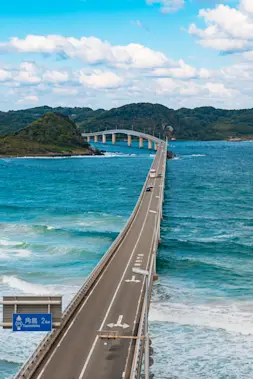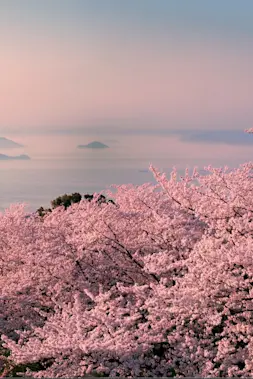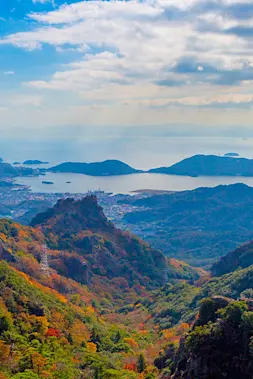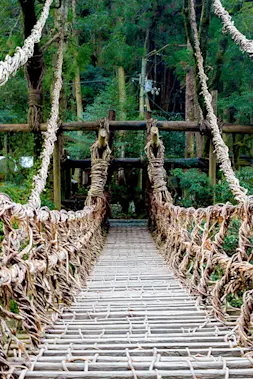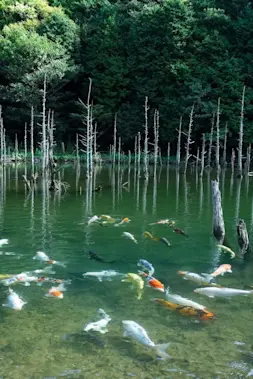Sea & Nature
Trekking and Cave Exploration at Akiyoshidai Quasi-National Park

-
- DESTINATION NAME
- Yamaguchi
-
- RELATED TAGS
-
- LAST UPDATED
- 05 April, 2021
There wasn’t another soul out as I reached a hiking summit at Akiyoshidai Quasi-National Park. Steel-grey limestone rock protruded from rounded, expansive hills of golden reeds, giving way to breathtaking views of the park’s unique limestone topography. Over 300 million years ago, this landscape was once a vast bed of coral reef, and I tried to imagine years of rainwater gradually dissolving the bedrock into Japan’s highest concentration of karst formations today. Much of this fantastical landscape lay below the surface, with an incredible 400 limestone caves scattered under the park.
I’m not what you’d call an experienced hiker, but my visit through Yamaguchi’s Akiyoshidai Quasi-National Park was a wonderful experience in fresh air, phenomenal views, and epic cave walks that I’m sure would titillate any underground explorer’s fancy. The park also offers various cycling routes so you can reach your destinations while crossing through this extraordinary landscape. For my trekking adventure, I started with the park’s famed Akiyoshidai Plateau before venturing off the beaten path to Taisho-do Cave and Taisho-do Trekking Course, where I enjoyed a near-private viewing of Yamaguchi’s extraordinary limestone landscape. So, with adventure on my mind and a packed itinerary, I went off to explore what Akiyoshidai Quasi-National Park had in store for me.
Akiyoshidai Plateau, Japan’s Highest Concentration of Karst Formations
My first stop on my trekking adventure was Akiyoshidai Plateau (秋吉台), located on the southern tip of Akiyoshidai Quasi-National Park. Though I could easily imagine Akiyoshidai pulling in the crowds during spring and summer seasons when the hills turn a vibrant green, a visit during off-travel seasons is similarly impressive with astounding views and colors. During my late winter visit, the karst topography was a composition of misty-blue skies with sensational reddish-gold grasslands. With virtually no crowds to speak of, I was rewarded with a wonderful awareness of being able to explore these rocky plains in peaceful solitude.
For a more dramatic show, controlled burns during the Akiyoshidai mountain-burning event on the first Sunday of February light up 1,500 hectares of grassland with flames reaching 5 to 6 meters high, nourishing the fields with ash in preparation for its vibrantly green plains of spring and summer.
Akiyoshidai Karst Observatory
At the head of Akiyoshidai Plateau is the two-story Akiyoshidai Karst Observatory (秋吉台カルスト展望台), where I was able to get an unobstructed view of the landscape before taking one of the walking trails that run through the karst landscape. For a caffeine fix, the Mine Akiyoshidai Geopark Center “Karstar” will fufill all your coffee needs, as well as additional tourism information and brochures if you need it.
Akiyoshido Cave: Japan’s Largest Limestone Cave
During your visit to the observatory, I’d highly recommend an underground trek to Akiyoshido Cave (秋芳洞). Spanning nine kilometers in length (with one kilometer open to the public), this cave is the longest limestone cave in Japan and known for its concert hall-sized caverns, multiple terraced limestone pools, and waterfalls. The closest entrance from the observatory is a ten-minute walk down the hill to an elevator that will bring you to the depths of the limestone cave.
Taisho-do Limestone Cave and Trail at Akiyoshidai Quasi-National Park
From one karst phenomenon to another, I headed 15-minutes northeast to Taisho-do Cave (大正洞) and Taisho-do Trekking Course for a slightly more private viewing of the park’s karst landscape and limestone caves. Out of the five recommended trails in Akiyoshidai, the Taisho-do Trekking Course is one of the shorter hikes you can take, taking about an hour to complete. At the base of the trail is Taisho-do Cave (大正洞), a designated Natural Monument, which requires at least 40 minutes on its own to explore its depths.
After paying my entrance fee to Taisho-do Cave, I walked five minutes down well-paved trails with towering cedars and overhanging ferns to the mouth of the cave. A small stone pillar with Japanese characters marked the narrow entrance, and only after crouching down to pass through the small entrance was the depth of the cave revealed to me. This deceivingly large cave has been called “Ushigashi-no-do,” or Cow Hidden Cave, allegedly used by villagers during Japan’s civil war period to hide their cows from thieves.
The Taisho-do Cave course runs 800 meters long with several stairs connecting approximately five-stories of underground tunnels and limestone hallways. The paths are all well-marked and lit for easy navigation. You can see various natural formations along the course, including the winding hallway of the ‘Staggering Path’ under the ‘Ceiling of the Serpent,’ statue-like stalactites, and cavernous halls with small waterfalls. Though 40 minutes is the recommended time to explore the cave, I found this maze-like underground world so extraordinary that it kept me occupied for much longer.
Taisho-do Trekking Course
After my cave exploration, I headed to the Taisho-do Trekking Route for another spectacular view of Akiyoshidai’s karst landscape. This hour-long hike took me through a forest that opened up to silver-bronze grasslands and steely limestone rocks, and up to the main highlight of my trek — Managatake (真名ヶ岳), the highest summit of the Taisho-do. Though this site is considered more remote than its famous counterpart of Akiyoshidai Plateau, I’d argue that the Taishi-do views are equally stunning — an ideal destination for hikers seeking a peaceful hike away from the crowds in this fantastic landscape.
From Managatake, you can continue down one of the several pathways that split off into the surrounding hills or stay on the Taisho-do trekking loop by turning right at the summit. Keep in mind that the entrance and various trekking points are marked with small Japanese wooden signs (no English), so take care to keep track of where you are as you explore the hiking paths. Regardless, you shouldn’t miss a visit to Taisho-do if you’re looking for a more serene visit to Akiyoshidai’s famous karst landscapes, which felt like a local secret spot I was lucky to discover.
Though the area’s Akiyoshidai Plateau may captivate the attention of many visitors, the national park’s off-the-beaten-paths of Taisho-do are just as deserving of your visit, especially if you’re looking to have these astonishing views all to yourself. With plenty of trekking routes, views of karst landscapes, and limestone caves, Akiyoshidai Quasi-National Park has a recommended trail for every level of eco-tourism adventurer.
How to Get to Akiyoshidai
We recommend driving by car to access all of Akiyoshidai’s various attractions, including Akiyoshidai Plateau, Taisho-do Cave, and Taisho-do Trekking Route. Visitors can reach Akiyoshidai Plateau via Bocho Buses from Hagi city (65-minutes).
There is also a bus service from the Shinkansen station, Shin-Yamaguchi Station, to Akiyoshido. (45 minutes) It takes about 2 hours to get to Shin-Yamaguchi Station from Kyoto Station or Shin-Osaka Station and about 4.5 hours from Tokyo Station.
Things to See and Do in Yamaguchi
If you’re looking to add another spectacular destination to your Yamaguchi travels, the red torii gates of Motonosumi Shrine is one of “Japan’s most famous beautiful sights” and is only an hour away. Yamaguchi’s oldest onsen town, Nagato Yumoto Onsen, is another 15 minutes away and offers plenty of traditional ryokan inns to rest while soaking in their ancient hot springs. For more things to see in Yamaguchi Prefecture, read our separate article on the top places to see and do while you’re traveling in the area.
Photographs and text by Mika Senda
RELATED DESTINATION
Yamaguchi
Yamaguchi is surrounded by ocean, mountains and rivers and is characterized by its climate, which is comfortable throughout the year. Its natural scenery, which includes some 1,500 kilometers of coastline, is a cut above. The prefecture has Kintaikyo Bridge, one of the three most famous bridges in Japan, and other tourist attractions, and its fugu (pufferfish) is famous as a winter dish.
